
When having a roof installation done, most homeowners’ biggest concern is the outer layer of the roof as this is the one that gets seen. Most people do not consider the other layers that help to keep your home dry and protected against harsh weather. You may be reading this because you only have roofing felt on your roof and it’s raining outside. Or perhaps you are here because you are starting a roofing project. Whatever the reason, you are wondering if roofing felt is waterproof.
Is roofing felt waterproof? Yes, roofing felt is waterproof. In fact, some roofing felt can protect the wood decking for up to 6 months before asphalt shingles are installed. It also helps to protect the roof against moisture that may build up underneath the asphalt shingles after they have been installed.
Do I need roofing felt? Yes, roofing felt is necessary to improve the lifespan of your roof and protect the wood decking against moisture. Most warranties will not cover a roof that has not been properly installed will roofing felt.
Is roofing felt waterproof?
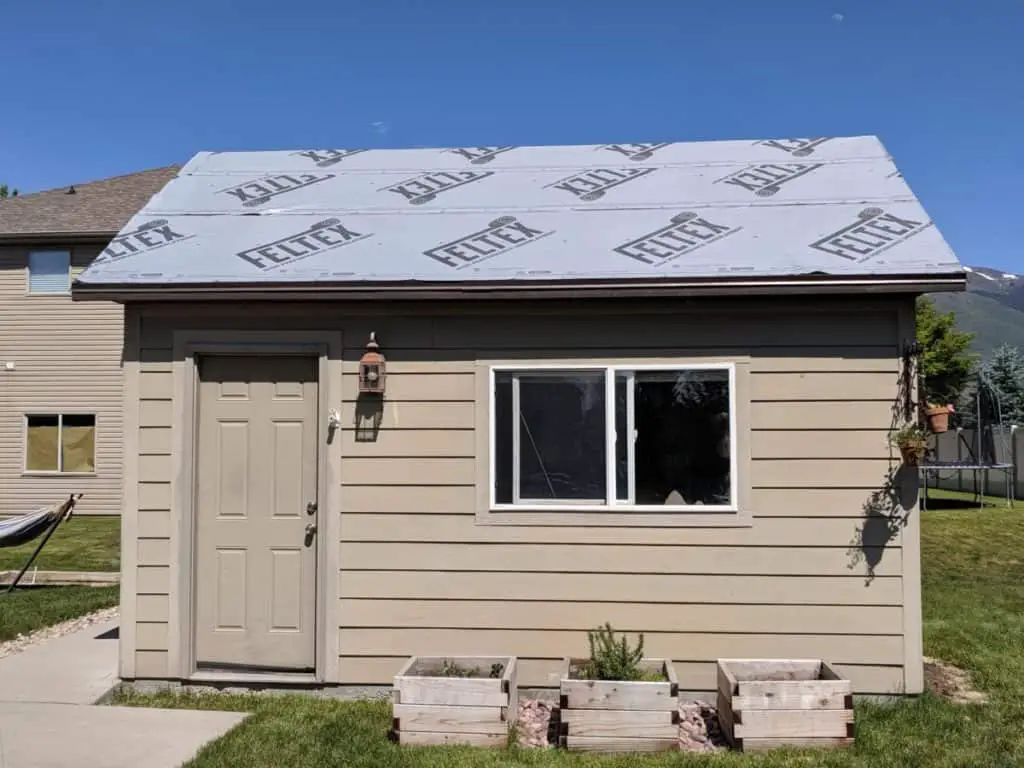
While the roofing felt’s primary purpose is to protect your home from water penetration, not all roofing felt is the same. It is essential to understand that there are various types of roofing felt underlayment. For example, some of the felt products are waterproof, while others are merely water-resistant. Additionally, some may provide better traction for walking on, while others tear easily.
Before, roofing was mainly used to act as a temporary waterproof cover over a structure until a solid tiled or slate roof could replace it. During these times, the felt would be the only barrier to protecting the structure and rooms below until the project was completed.
More recently, the roofing felt is implemented in the roofing system and is seen as a crucial layer of the roof structure as it helps to provide a secure and waterproof roof.
With an efficient roofing felt underlayment, your roof is bound to be more durable and comply with building regulations as well.
Even if you are getting the most durable, tight-sealed, long-lasting roof shingles on the market, roofing felt can still be advantageous to your roofing system. Roofing felt helps starting from the beginning of the roof installation process to the end of the roof’s lifespan by keeping the water out and more.
Since a new roof cannot be installed in one day, the roofing felt will protect the roof’s deck and the home from harsh weather until the project moves forward. Another benefit of roofing is that it provides a smooth surface for shingle installation and can help prevent the roofers from slipping.
With roofing felt underlayment, you can be rest assured that whenever a shingle blows off, a crack occurs, or any other damage obtains to your roof, leaving your roof exposed to the element, that you still have one more layer of protection.
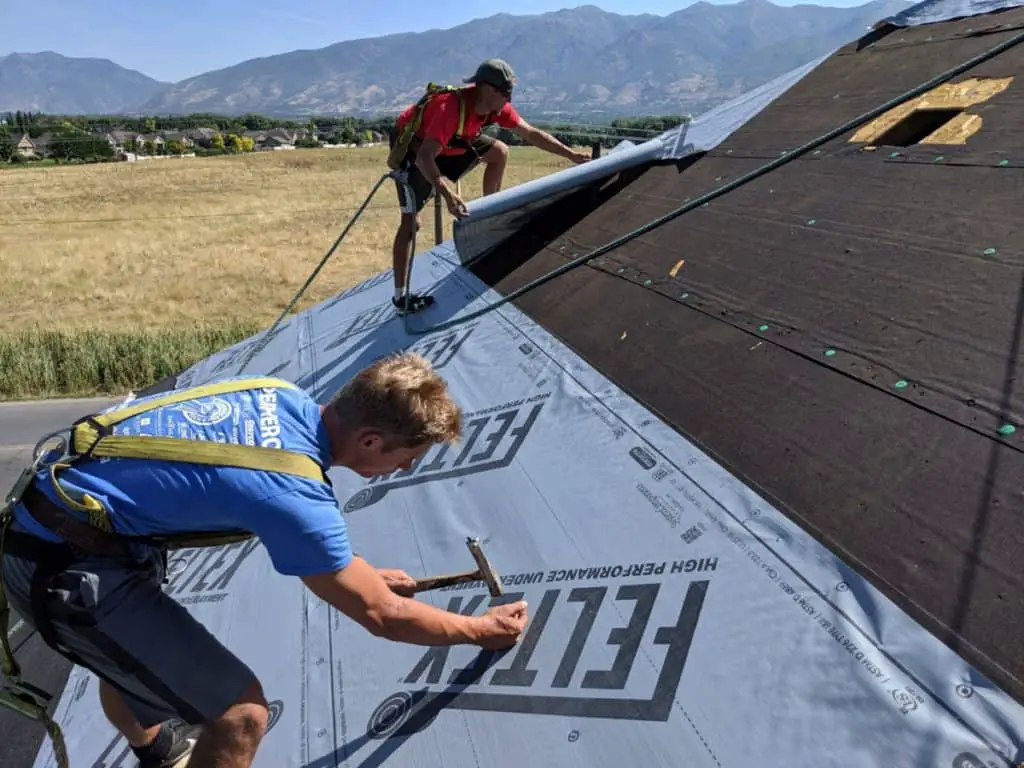
Besides keeping water from the outside out of your home, roofing felt underlayment also acts as a moisture barrier. This is because the roofing felt will catch condensation on the underside of the shingles if the hot air from your house reaches the roof. The roofing felt protects the wood decking and prevents damages in the long run.
Keep in mind that more than one type of roofing felt is available, and they usually come in two different weight-types, #15 and #30. The difference between the two is the strength; #30 is stronger and heavier than #15.
The three main types of roofing felt are:
- Asphalt-Saturated Felt (Felt Paper)
- Non-Bitumen Synthetics (Synthetic Felt Paper)
- Rubberized Asphalt
#30 roofing felt is typically used for a roofing project that will take a long time. Nevertheless, it is essential to remember that roofing felt is not a long-term solution and will not project the roof decking and structure underneath for an extended time.
While some roofing felt types are entirely waterproof, others are only resistant to water, which means that they eventually start leaking if they are left uncovered for too long.
Another thing to note is that when the shingles are being installed, the roofing felt underlayment will obtain loads of holes from the nails used during the roof construction, making the felt underlayment more prone to leaks.
Nonetheless, roofing felt is an excellent backup waterproof membrane in case of leakage and is highly recommended by any professional roofer.
What is the purpose/need of roofing felt underlayment?
The shingles of your roof are the first line of defense against the harsh rays of the sun, the wind, and they block precipitation. However, the shingles can get lifted by strong winds since they overlap and even get infiltrated by wind-driven rain since they are not sealed.
Shingles also become brittle by age, and cracks can occur or other damage that will let water in. Therefore, roofing felt is needed to act as a backup waterproof membrane if the first line of defense, which are the shingles, fails.
The Three Main Types of Roofing Underlayment
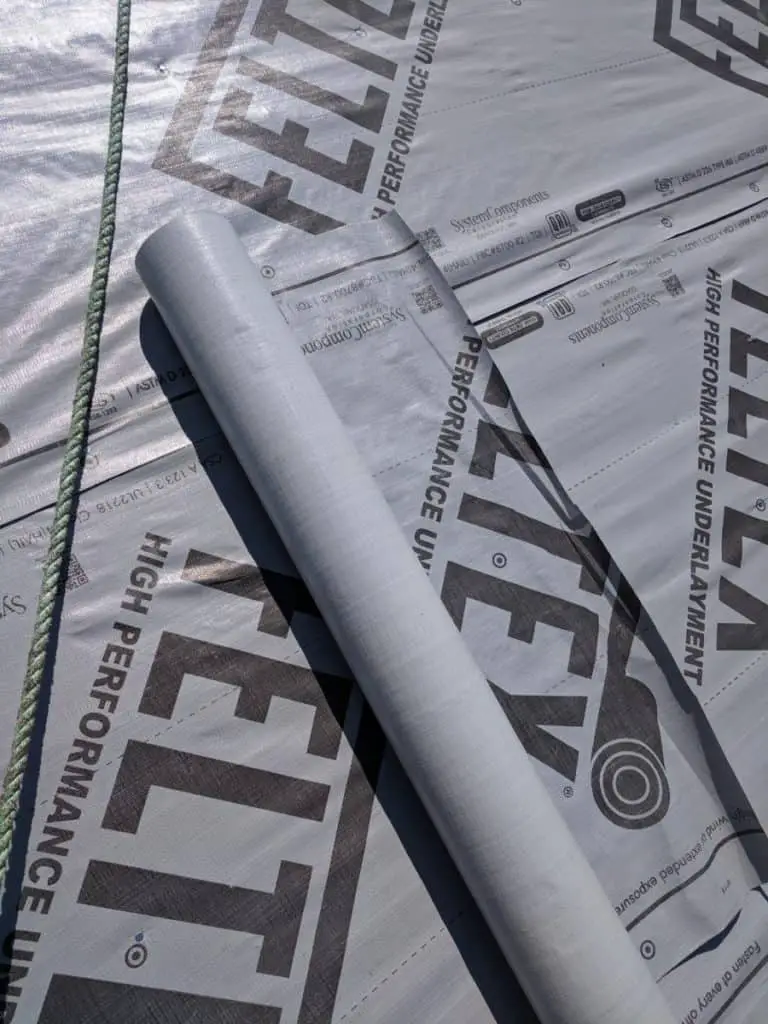
As previously mentioned, the three main types of roofing underlayment are: asphalt-saturated felt, rubberized asphalt, and non-bitumen synthetic.
Asphalt saturated felt the most economical choice. It has been around the longest and is the basic roofing felt type. It will not last as long as the other underlayment types and gets brittle as it ages.
It is available in 15 and 30-pound weights. The heavier the felt, the more robust it is against harsh weather conditions.
Sythetic felt and rubber felt are more durable and higher quality but they also come with a more expensive price tag.
Each of these types of roofing felt underlayment’s have different characteristics and have various advantages and disadvantages. The one that the roofer chooses for your roof would most likely depend on certain factors, including the climate of your area, warranty requirements, and the project’s budget.
Where should roofing felt be used?
Roofing felt underlayment is installed beneath the shingles to provide a backup waterproof membrane if the shingle fails, and a leakage happens. This layer of felt is the first layer of roofing that gets laid down when installing asphalt shingles, or it can be applied over wood shingles or a built-up roof.
When a second or third layer of asphalt shingles are installed, some contractors might even install another layer of felt. However, the Uniform Building Code regards the roofing felt beneath the older shingles as adequate, so a second felt above the old shingles is not always needed.
Can roofing felt still be used after it is wet?
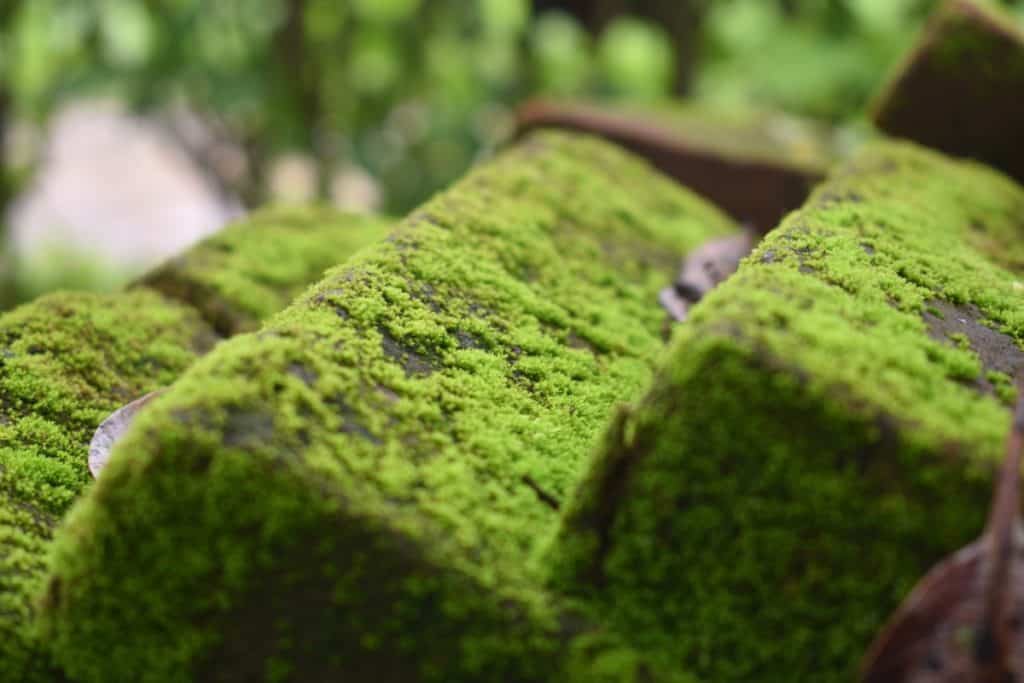
It is possible for roofing felt to get wet and still maintain its integrity. Nonetheless, it is crucial to make sure that roofing felt is not exposed to the element for more than a few days. Sunlight and large amounts of lasting moisture can eventually cause the felt to break down.
If roofing felt was exposed to water but still holds its integrity, in other words, it did not wrinkle, bubble, or rip, then it can still be used as an underlayment for a roof. However, it is crucial to make sure the felt dries out first before it gets covered with shingles.
If shingles get installed over wet roofing felt it might lead to mold and mildew, which can cause the roofing felt and subsurface to disintegrate. Furthermore, any visible wrinkles or bubbles in the roofing felt will cause heat pockets, which can damage the shingles over time, while rips in the felt compromise its ability to protect the roof.
Can you lay roof felt in the rain?
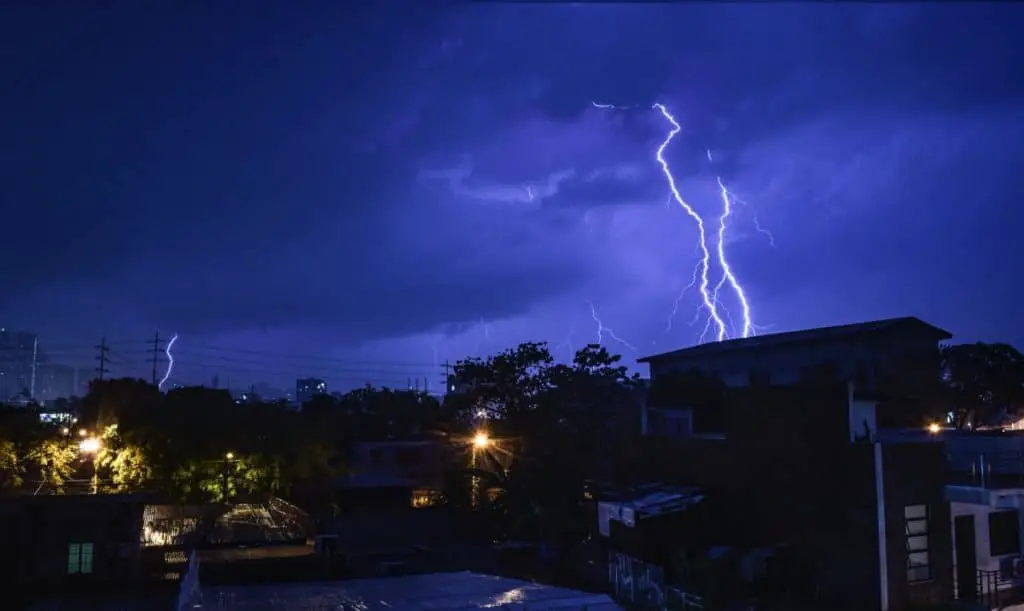
First off I would not suggest you even go on the roof during a rain storm. This can be very dangerous. The risk of lighting, slipping off the roof, and potential water damange all increase the level of risk.
With that said it is still possible to install felt on a roof during the rain. Any roof can always be worked on when it is raining, whether it is a roof repair or even replacement. I personally have only worked on roofs during the rain if it was a light on and off sprinkle and the roof was already dryed-in.
If an emergency roof repair or installation needs to be made on a rainy day, roof tarps can be used to cover the exposed area of the roof until better working conditions arise.
Additional Questions
What is the best underlayment? That depends on your specific needs, budget, warranty requirements, and local climate. Most professional roofers today use synthetic felt underlayment. This one is also my personal preferance.
What is the difference between synthetic roof underlayment and felt? Traditional felt or Tar Paper is made of cellulose or fiberglass, while synthetic underlayment is made from engineered materials such as polypropylene or polyester. Both of these types have their advantages and disadvantages. Synthetic underlayment is usually the best option if you need a light-weight durable material.
